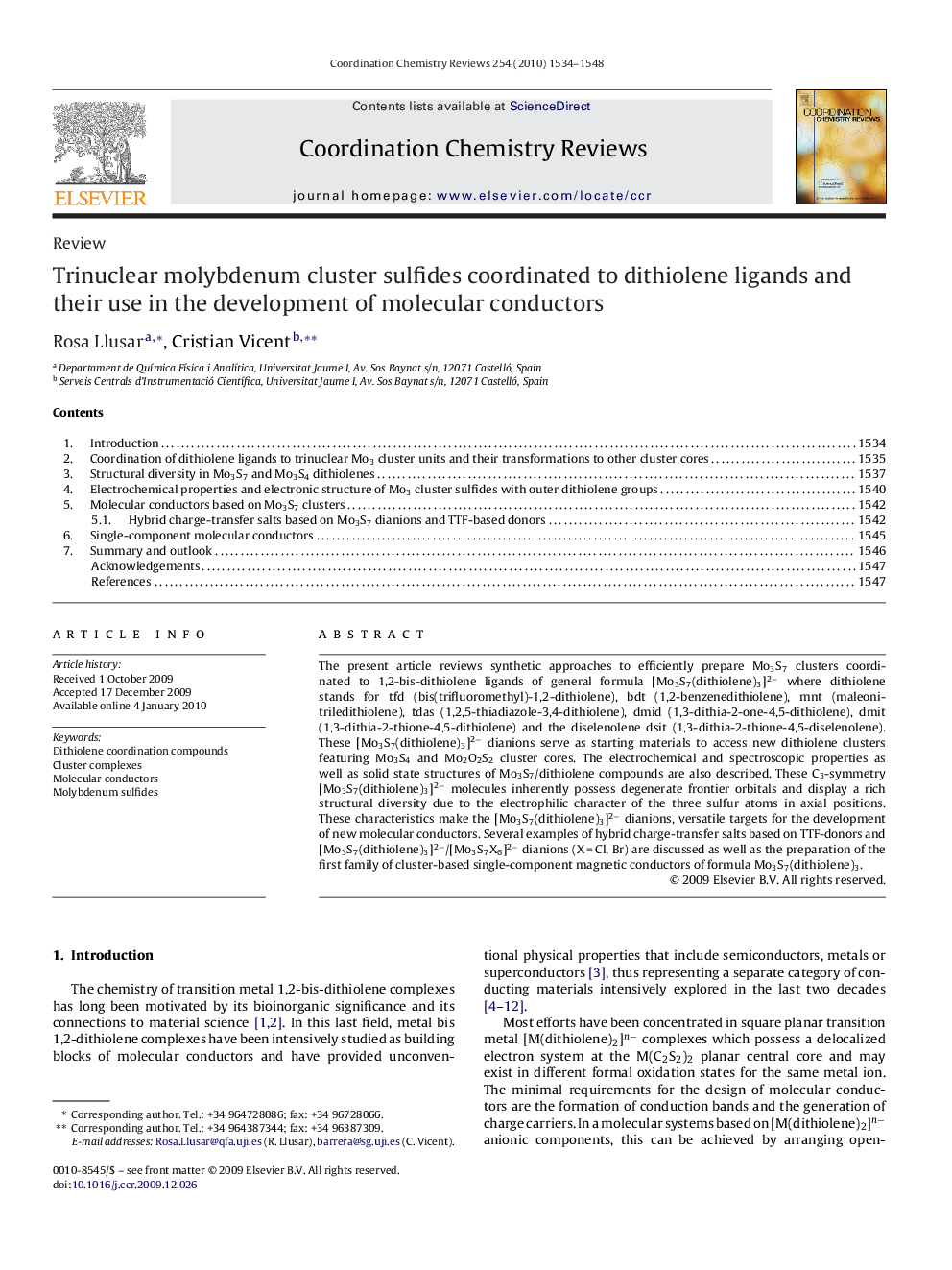| Article ID | Journal | Published Year | Pages | File Type |
|---|---|---|---|---|
| 1299293 | Coordination Chemistry Reviews | 2010 | 15 Pages |
The present article reviews synthetic approaches to efficiently prepare Mo3S7 clusters coordinated to 1,2-bis-dithiolene ligands of general formula [Mo3S7(dithiolene)3]2− where dithiolene stands for tfd (bis(trifluoromethyl)-1,2-dithiolene), bdt (1,2-benzenedithiolene), mnt (maleonitriledithiolene), tdas (1,2,5-thiadiazole-3,4-dithiolene), dmid (1,3-dithia-2-one-4,5-dithiolene), dmit (1,3-dithia-2-thione-4,5-dithiolene) and the diselenolene dsit (1,3-dithia-2-thione-4,5-diselenolene). These [Mo3S7(dithiolene)3]2− dianions serve as starting materials to access new dithiolene clusters featuring Mo3S4 and Mo2O2S2 cluster cores. The electrochemical and spectroscopic properties as well as solid state structures of Mo3S7/dithiolene compounds are also described. These C3-symmetry [Mo3S7(dithiolene)3]2− molecules inherently possess degenerate frontier orbitals and display a rich structural diversity due to the electrophilic character of the three sulfur atoms in axial positions. These characteristics make the [Mo3S7(dithiolene)3]2− dianions, versatile targets for the development of new molecular conductors. Several examples of hybrid charge-transfer salts based on TTF-donors and [Mo3S7(dithiolene)3]2−/[Mo3S7X6]2− dianions (X = Cl, Br) are discussed as well as the preparation of the first family of cluster-based single-component magnetic conductors of formula Mo3S7(dithiolene)3.
